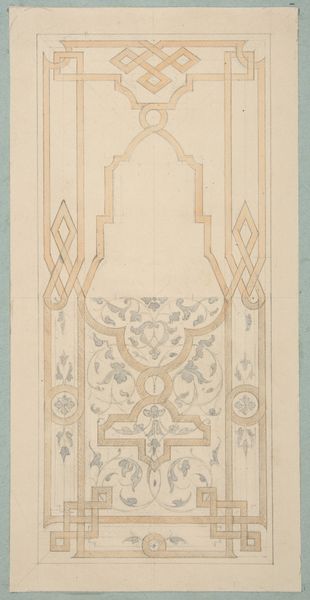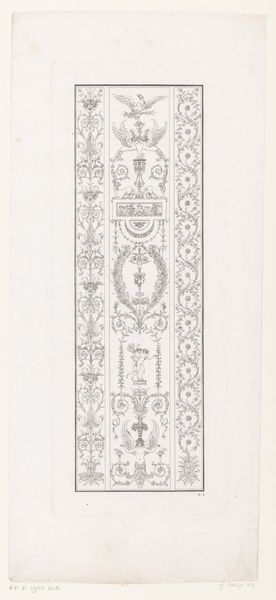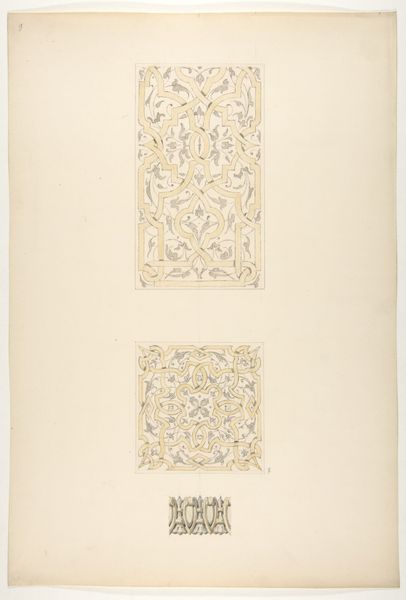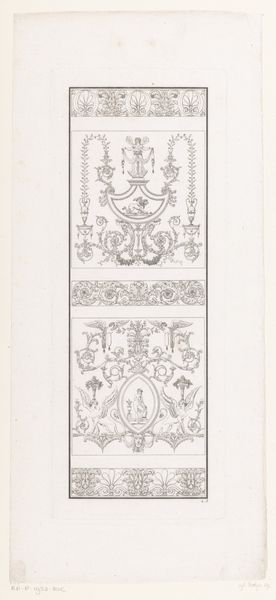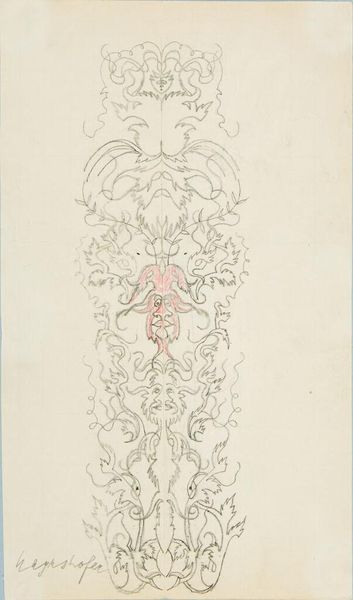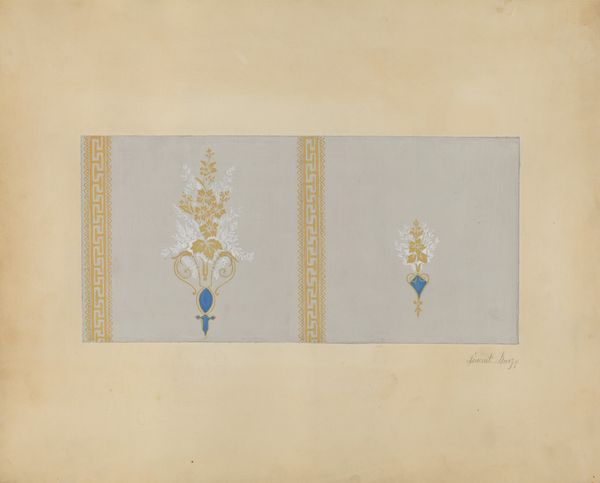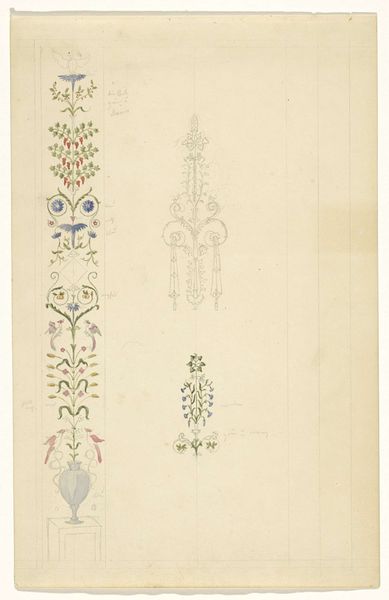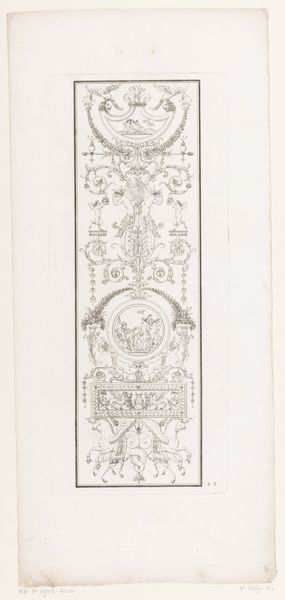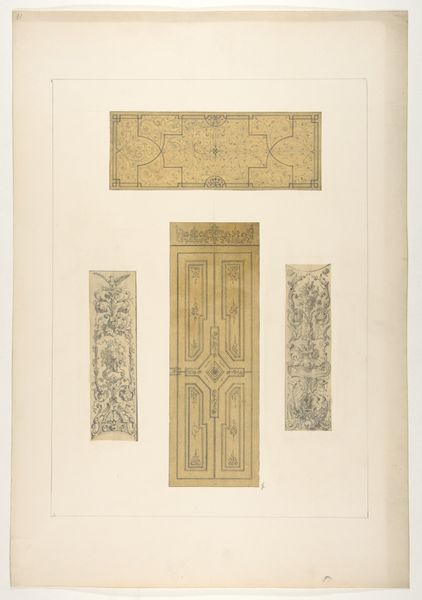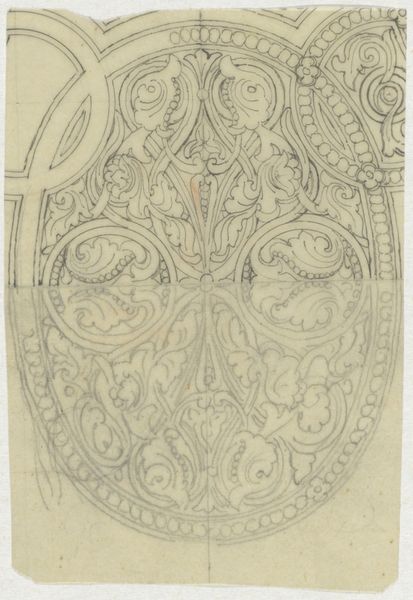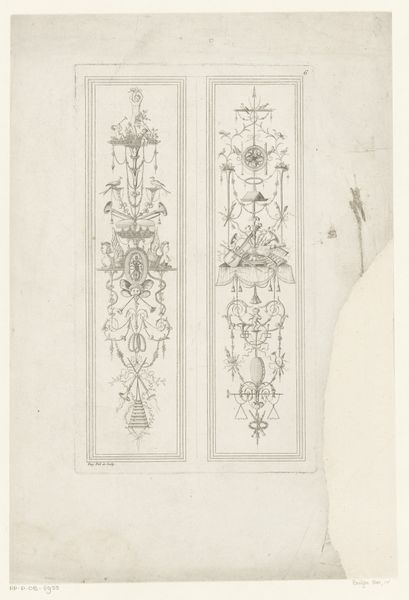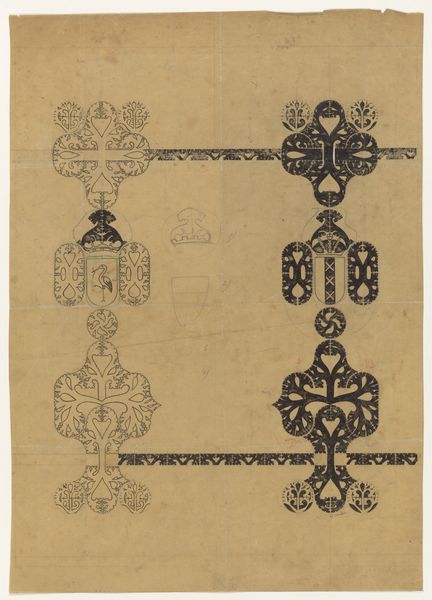
drawing, paper, watercolor
#
drawing
#
paper
#
11_renaissance
#
watercolor
#
geometric
#
watercolor
Dimensions: height 163 mm, width 251 mm
Copyright: Rijks Museum: Open Domain
Franz Jakob Kreuter created this design for pilaster motifs, sometime in the mid-19th century. Trained as an architect, Kreuter’s work provides insights into the cultural values of his time, where classicism and ornamental design was often used to convey order and hierarchy. The motifs, originally intended for architectural embellishments, echo the era’s preoccupation with classical themes, visible in the stylized figure reminiscent of ancient Greek or Roman art. But while these motifs might appear purely decorative, their presence on structural elements speaks to the relationship between art, power, and identity. Consider how the ornamentation might serve to elevate the status of a building or its inhabitants. The patterns, with their blend of classical and floral elements, offer a glimpse into the complex interplay of art, design, and society in 19th-century Europe. It reminds us that even seemingly innocuous designs can be imbued with layers of meaning about who we are, and what we value.
Comments
No comments
Be the first to comment and join the conversation on the ultimate creative platform.
